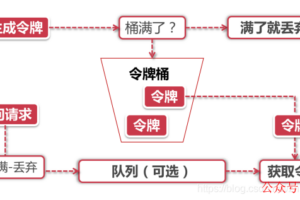1。使用java.util.Properties类的load()方法
示例: InputStream in = lnew BufferedInputStream(new FileInputStream(name));
Properties p = new Properties();
p.load(in);
2。使用java.util.ResourceBundle类的getBundle()方法
示例: ResourceBundle rb = ResourceBundle.getBundle(name, Locale.getDefault());
ResourceBundle类是java自带的类,类路径:java.util.ResourceBundle,用来读取项目中后缀为properties的配置文件。
下面简单举例说明一下用法:
1. 数据准备
1)配置文件名称:application.properties(可将文件存放在工程的resource目录下,或者lib目录下)
2)配置文件内容:
dataBaseIp=127.0.0.1
user.name=root
user.password=123456
2. ResourceBundle类实现读取application.properties中key对应的value的步骤:
1)获取配置文件的名称,使用getBundle()方法
3. 在工程中调用步骤2中读取到的值即可,不赘述。
3。使用java.util.PropertyResourceBundle类的构造函数
示例: InputStream in = new BufferedInputStream(new FileInputStream(name));
ResourceBundle rb = new PropertyResourceBundle(in);
4。使用class变量的getResourceAsStream()方法
示例: InputStream in = JProperties.class.getResourceAsStream(name);
Properties p = new Properties();
p.load(in);
5。使用class.getClassLoader()所得到的java.lang.ClassLoader的getResourceAsStream()方法
示例: InputStream in = JProperties.class.getClassLoader().getResourceAsStream(name);
Properties p = new Properties();
p.load(in);
6。使用java.lang.ClassLoader类的getSystemResourceAsStream()静态方法
示例: InputStream in = ClassLoader.getSystemResourceAsStream(name);
Properties p = new Properties();
p.load(in);
补充
Servlet中可以使用javax.servlet.ServletContext的getResourceAsStream()方法
示例:InputStream in = context.getResourceAsStream(path);
Properties p = new Properties();
p.load(in);
完整的示例,可以参考附件文件
JProperties.java文件
import java.util.*;
import java.io.InputStream;
import java.io.IOException;
import java.io.BufferedInputStream;
import java.io.FileInputStream;
public class JProperties {
public final static int BY_PROPERTIES = 1;
public final static int BY_RESOURCEBUNDLE = 2;
public final static int BY_PROPERTYRESOURCEBUNDLE = 3;
public final static int BY_CLASS = 4;
public final static int BY_CLASSLOADER = 5;
public final static int BY_SYSTEM_CLASSLOADER = 6;
public final static Properties loadProperties(final String name, final int type) throws IOException {
Properties p = new Properties();
InputStream in = null;
if (type == BY_PROPERTIES) {
in = new BufferedInputStream(new FileInputStream(name));
assert (in != null);
p.load(in);
} else if (type == BY_RESOURCEBUNDLE) {
ResourceBundle rb = ResourceBundle.getBundle(name, Locale.getDefault());
assert (rb != null);
p = new ResourceBundleAdapter(rb);
} else if (type == BY_PROPERTYRESOURCEBUNDLE) {
in = new BufferedInputStream(new FileInputStream(name));
assert (in != null);
ResourceBundle rb = new PropertyResourceBundle(in);
p = new ResourceBundleAdapter(rb);
} else if (type == BY_CLASS) {
assert (JProperties.class.equals(new JProperties().getClass()));
in = JProperties.class.getResourceAsStream(name);
assert (in != null);
p.load(in);
// return new JProperties().getClass().getResourceAsStream(name);
} else if (type == BY_CLASSLOADER) {
assert (JProperties.class.getClassLoader().equals(new JProperties().getClass().getClassLoader()));
in = JProperties.class.getClassLoader().getResourceAsStream(name);
assert (in != null);
p.load(in);
// return new JProperties().getClass().getClassLoader().getResourceAsStream(name);
} else if (type == BY_SYSTEM_CLASSLOADER) {
in = ClassLoader.getSystemResourceAsStream(name);
assert (in != null);
p.load(in);
}
if (in != null) {
in.close();
}
return p;
}
扫码领红包
 微信赞赏
微信赞赏 支付宝扫码领红包
支付宝扫码领红包






